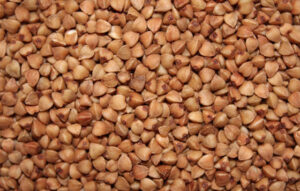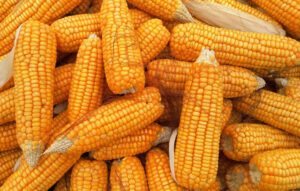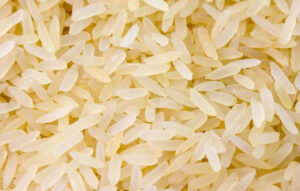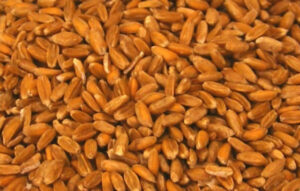GrainProTrade – Rye wholesale at producer prices
Company GrainProTrade supplies rye directly from the farmers in the Ukraine on favorable terms. Our rye has a moisture content of 14% and a hectolitre weight of 63 kg/hl.
You can safely buy rye from us without worrying about the quality, because all our products are consciously selected by our QM employees in Ukraine and thus meet the highest standards, which guarantees the expected quality of the goods. Besides the high standard, the products are sold at an affordable wholesale price. The conditions for the sale of rye can be specified at any time in writing or by telephone with the manager. Our team provides our customers with the in Big Bag Packed rye ordered by truck within 5 working days.
Current prices for rye:
- rye for FCA-Price from €230/ton plus freight costs.
The main advantages of the ZusaWorking with our company:
- the high level of professionalism of our entire team, which ensures a hassle-free delivery of quality rye in the shortest possible time;
- an appropriate price level, since we deal directly with rye producers in the Ukraine, e.gusamen work;
- convenient delivery straight to you.
Contact our managers on the website or by phone. We offer high quality rye at an optimal price!

rye field

Rye

Rye Bread
All about rye
Rye is a close relative of wheat, but much more useful than the latter. Its protein contains a larger amount of amino acids valuable for the body, and the grains contain less gluten. Rye flour has 5 times more fructose than wheat flour. And products from it are rich in hemicellulose and fiber, which improve the microflora, strengthen intestinal peristalsis and strengthen immunity.
The main group of chemical ZusaComposition of rye grains, like all grains, are carbohydrates, more than half of which is starch. The rest contains gums, mucilage, water-soluble polyfructosides, levulesans, and other high-molecular compounds. In general, carbohydrates make up 55-60% of the weight. Among the bread cultures, rye grains are characterized by the highest sugar content.
The most volatile value is the protein content. Depending on the type of cultivation and the variety, it can range from 8% to 19% amount based on dry grain. The protein mass is dominated by gliadin and albumin as well as glutelin and globulin. Very rapid swelling is characteristic of the protein substances of rye grain, during which a viscous colloidal mass is formed. The grain also contains more than 10 essential and 8 interchangeable amino acids.
Fat occupies up to 2% of the total grain weight. More than 80% of these are glycerides of unsaturated acids. The main location of fat in grains is the embryo and the aleiron layer.
Mineral salts are mainly found in cells in the form of solutions, a smaller part is in the Zusacontain decomposition of organic substances. Depending on the species and variety, ash can range from 1,5% to 2,5%, but in most cases it ranges from 1,8 to 2%. Most mineral compounds are made up of oxides of potassium, sodium, calcium, magnesium, phosphorus, sulfur, silicon, and chlorine.
Since the grain has a different Zusacomposition, which depends on many factors, the grains are divided into full, medium and thin. The full ones differ in the highest concentration of starch, while the stuffed ones are rich in fiber, fats, proteins and ash substances. The fruits of plants grown in the east and south contain fewer carbohydrates and more protein, while their northern and western counterparts are the opposite.
Rye is a high-calorie product, 100 grams contain 338 kcal.
Rye is a genus of annual or perennial herbaceous plants of the flowering plants division, the monokraut class, the cereal order, the cereal family (Secale).
A perennial or annual crop has a moist, strong root system that penetrates the soil to a depth of 2 meters. A straight, hollow rye stem has 3, 5, 6, or 7 internodes. The average height of the rye stalk is 80-100 cm, depending on the variety and growing conditions it can reach 2 meters. Closer to the ground, the stalk is absolutely bare, it is slightly hairy only under the ear.
The flat rye leaves, which are up to 2,5 cm wide, grow up to 30 cm long and have zusaa characteristic gray color with the stem. The surface of the leaves may be hairy with small villi, which indicates good drought resistance of the plant and tolerance to light sandy soils. At the base of the rye leaf is a shortened tongue and hairy or completely bare "ears" that enclose the stalk and tend to dry out and fall off quickly.
The inflorescence of rye consists of an elongated ear, holding on to a solid length of up to 15 cm, unbroken on part of the axis. The bicolored ears of rye, from which 3 stamens protrude, sit on the tetrag processes in the core section.
The grains vary in size, shape and color. The shape of the grains can be oblong or oval with a visible transverse groove. The grain length ranges from 5 to 10 mm with a width and thickness of 3,5 mm. The color of the rye grains is brownish, yellow, grey, white or greenish.
Rye rises quickly and quickly builds a green mass. Dense stems of rye are formed after 18-20 days after germination, after 40-50 days the rye is served, flowering begins in another 7-12 days. Rye is a cross-pollinated plant, with pollen carried by the wind. Milk ripening of grains occurs 2 weeks after flowering and lasts about 10 days. The rye ripens 2 months after the beginning of the harvest.
One of the most important positive properties that rye has is winter hardiness. It tolerates frosts without snow up to -30 °C and at the same time gives a good harvest. Therefore, growing rye is possible in areas where growing wheat is difficult. Some varieties bring a harvest of up to 40 and even 50 quintals/hectare.
Rye is resistant to many pests and pathogens (especially brown, stem rust, snow mold). More productive and for this reason the winter rye is wider than in spring. Winter roe species are very bushy (three to eight stems from a single seed), they soon ascend into growth, outperforming even such fast-growing weeds as oatmeal and osote. The cultivation of rye is recommended as a previous culture for hack and spring greens.
Rye is not too demanding on the soil and does not suffer from its high acidity as much as wheat. One of the main disadvantages of rye is a long trunk, which makes the plant easy to lie down and difficult to harvest.
Rye is used not only to make flour, but also as a nutritious fodder for livestock. It goes to the production of alcohol, malt, starch.
Winter rye is sown in the usual ordinary and narrow-grazing way. Growing rye in the latter method is more efficient as it allows the change to be placed evenly over the area. However, it is necessary to carefully treat the soil before planting.
In winter rye, in contrast to other cereals, the leaf node is placed close to the soil surface. Therefore, you should not close the rye seeds too deeply. Otherwise, the abundance of shoots will decrease, the harvest will decrease.
The largest biological harvest is produced at the end of wax ripening, when dry substances no longer enter the ripening grain. It is necessary to clean the rye even earlier, in the middle of wax maturity, to avoid the grain falling off. Newly arranged rye lies down easily, especially in the rain, it's from Fusagreatly affected.
The density of standing rye should be 300 or more stalks per 1 square meter. With high humidity, the optimal roller thickness is 15–18 centimeters, with normal humidity - 18–22 centimeters, with dry humidity - up to 25 centimeters.
Rye is a universal crop. Its main use is food. Thanks to the nutrient balance, rye bread has provided full nutrition for the population of large areas of the country for centuries.
A large part of the rye grain is also used for fodder purposes. The presence of antinutrients in rye grain limits its use in livestock and poultry feed, but various grain processing methods (extrusion, fermentation, ivy, canning, etc.) allow up to 70% of the total concentrates to be used in animal feed. In the spring, rye, ahead of other crops, gives a green mass that can be used for feeding all types of livestock and poultry, laying hayloft and spring silo, preparing nutritious herbal flour and granules.
In addition to providing food and fodder, winter roe grain is valuable as a technical raw material for starch and alcohol production.
In modern ecological and economic conditions, it is promising Bioobtaining fuels from plant-based raw materials. Winter rye is considered the most effective of the grains. For these purposes, you can use not only grain, but also its waste, as well as crushed rye straw through thermochemical processing.














